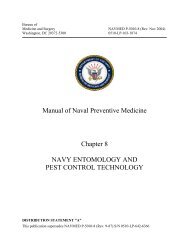ENVIRONMENTAL FINAL GOVERNING STANDARDS ITALY
ENVIRONMENTAL FINAL GOVERNING STANDARDS ITALY
ENVIRONMENTAL FINAL GOVERNING STANDARDS ITALY
You also want an ePaper? Increase the reach of your titles
YUMPU automatically turns print PDFs into web optimized ePapers that Google loves.
<strong>ITALY</strong> - 12 Historic & Cultural Resources<br />
Table 12.1. Cultural and Historic Resources<br />
1. The definition of cultural resources apply to all items that belong to State,<br />
Regions and other public institutions and private subjects without profit goals,<br />
presenting artistic, historic, archeological and ethno-anthropological interest.<br />
2. In addition, the following items presenting artistic, historic, archeological and<br />
ethno-anthropological interest are also considered cultural resources:<br />
a. The collections of museums, art galleries, and galleries and all the other<br />
exhibitions belonging to State, Regions and other public institutions.<br />
b. The archives and the single documents belonging to State, Regions and<br />
other public institutions.<br />
c. The book collections of the libraries of State, Regions and other public<br />
institutions.<br />
3. In addition to the previous points the following are also considered cultural<br />
resources, after their notification to the public authorities:<br />
a. All the items (not previously mentioned at points 1 and 2) with a particular<br />
interest from an artistic, historic archeological and ethno-anthropological<br />
point of view.<br />
b. The archives and the single documents belonging to private subjects and<br />
characterized by a particularly important historic interest.<br />
c. The book collections belonging to private subjects characterized by an<br />
exceptional cultural interest.<br />
d. All those items, to whoever they belong, characterized by a particularly<br />
important interest in relation to their political, military, literature, artistic<br />
and cultural interest including those coming from the history of public,<br />
community and religious institutions.<br />
e. The collections of objects, to whoever they belong, that due to their<br />
tradition, fame and particular environmental features, symbolize an<br />
exceptional artistic and historic interest.<br />
4. For those resources listed at point 1 and point 3 letter a:<br />
a. Items regarding paleontology, prehistory and the primitive civilizations.<br />
b. Numismatic items.<br />
c. Manuscripts, autographs, letters, incunabula, books, printings, engravings,<br />
and their matrices characterized for their value and rarity.<br />
d. Geographical maps and musical scores characterized for their value and<br />
rarity.<br />
e. Photographs and related negatives and matrices, films and general<br />
audiovisual equipment characterized for their value and rarity.<br />
f. Villas, parks and gardens characterized for their historic and artistic value.<br />
g. Public squares, places, streets and other open urban spaces characterized<br />
for their historic and artistic value.<br />
h. Mining sites characterized for their historic and ethno-anthropological<br />
interest.<br />
i. Boats and ships characterized for their historic, artistic and ethno-<br />
September 2012 Italy FGS 12-5<br />
Revision 0
















